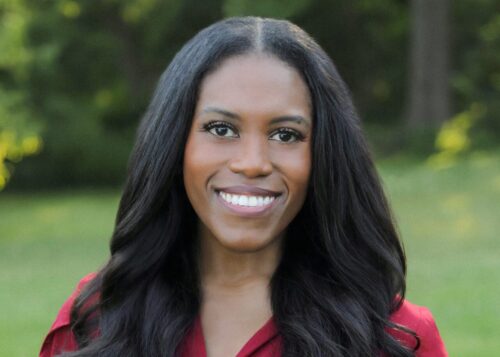New Research Identifies Actionable Gaps in Care for Trans Patients
October 25, 2022

San Francisco Chronicle/Hearst Newspapers, Getty Images
"The thing that really keeps me awake at night is that, from the standpoint of medicine, compassion must guide knowledge and knowledge must guide compassion."
A 19-year-old Black trans man came to the hospital for an esophagogastroduodenoscopy, which required anesthesia. He removed his clothing and wore a medical gown as asked by staff prior to the procedure. During the procedure, his oxygen saturation rapidly decreased to 50% — critically low. With doctor intervention, his numbers quickly improved, and he was not hurt. However, it became clear after this incident that the patient was wearing a chest binder during the procedure, which likely predisposed him to more rapid oxygen desaturation — but no one noticed its presence beforehand. The chest binder was also not noted in the patient’s electronic medical record, despite it being a common practice among trans men.
Researchers from Boston Medical Center (BMC) published the case report of this patient, noting that it reflects the gap between practitioner knowledge or hospital guidelines and the practices of transgender patients.
Eugene Kim, MD, anesthesiologist at BMC and Shivali Mukerji, formerly a research project manager of Anesthesiology at BMC, who now works in the health technology space, spoke with HealthCity about their case report, using it as a jumping off point to discuss the gaps in culturally competent care for trans patients and how research plays a vital role in closing those gaps.
HealthCity: You’re conducting an array of research on gaps in care for trans patients, including this case report about oxygen desaturation and chest binding. What is the purpose and ultimate goal of this research?
Eugene Kim, MD: The thing that really keeps me awake at night is that, from the standpoint of medicine, compassion must guide knowledge and knowledge must guide compassion. Historically speaking, in terms of demographic groups in medicine, we have often fallen short — either by assuming a demographic is too similar to majority culture or by assuming, in error, that a demographic is too different from a
I have two examples of this. First, for decades, we were missing cardiac complaints in women because we just assumed that their symptoms would present similar to the studies that we had existing on men, and we were wrong. Second, to this day, we find that our Black patients are not treated in the same way with pain complaints as our white patients because of an errant understanding that can be revealed in surveys of medical students believing inherently that Black people have a higher threshold of pain than white people.
When it comes to the transgender community, there are too many questions that we don’t have answers to. And so, while we fail our patients in terms of compassion, some of these failures also come from lack of understanding.
When it comes to the transgender community, there are too many questions that we don’t have answers to. And so, while we fail our patients in terms of compassion, some of these failures also come from lack of understanding. The birth of this research journey came from some of our own shortcomings in terms of chest binding.
As a medical community, we must seek to understand. Our compassion must be informed. Ultimately that is what I think guides our practice.
At Boston Medical Center we are blessed in that we have a significant population of transgender patients, so most providers get some experience. This does not compensate for the lack of research, the lack of knowledge that we have about this community. And it’s not universal. Many community hospitals, many cities won’t have the transgender population that we have and so it’s incumbent upon us to learn as much as we can from the community so that we can better inform medical care across the country.
HC: It’s clear these gaps in culturally competent care go beyond a lack of understanding of chest binding. Can you give a glimpse of other issues you found, especially those that can be helped with a smaller-scale change?
Shivali Mukerji: One study we worked on that hasn’t yet been published found that in EPIC and other electronic health record systems (EHRs), there was a lot of misgendering of patients. When we dug deeper, we found it was because there was a binary system on the backend — not necessarily because providers were deliberately trying to misgender patients. We have a number of patients that don’t fit into that binary system.
Working with EPIC and other EHRs to make better systems is a fairly easy quality improvement project.
EK: In addition to risk of blood clots, we have two additional focuses on airway events and nausea, particularly as it relates to estrogen therapies.
More overarching, something else that keeps me up at night in terms of approaching this research is the simple fact that I have no idea what it is like to be transgender. And so for that, I rely on researchers that have gone before us, like the Center for Transgender Medicine and Surgery and Carl Streed, MD, MPH, FACP, and the testimonials of patients that interact with us.
One patient shared what it was like walking into the hospital and being potentially identified by a first name and last name that you don’t recognize anymore or wearing a bracelet that bears that name and a gender that you don’t identify with anymore.
That patient is then facing the natural anxiety that comes with being naked in front of strangers and the general fear of having surgery, coupled with the fact that there may be a suspicion in your mind that maybe half the people around you don’t approve of you. The missed pronouns, by their description, are only the tip of the iceberg.
To say nothing of the fact that about 80% of practitioners report having no training in transgender care and 24% of patients say they need to educate providers about transgender concepts or issues. The fact of the matter is that we are behind.
HC: A lot of this research seems not just focused on direct medical care, but in making a trans patient feel safe and welcome. How do we go about rebuilding that trust for our trans patients we’ve previously failed across the country because of lack of information, at best?
SM: It’s important to involve patients in the conversations.
How do we make sure that the research that we’re disseminating is fair and just
EK: I think there are red flags and there are green flags. To take a different demographic population, non-English speakers: I am terrible at languages and I will forever need interpreters. I’m trying
The question I think needs to be asked is: What are some of the green flags that we can extend to all of our patients and to the transgender community in particular? One of the green flags that has been suggested to me is in saying how I identify. It can signal to the patient that I recognize that how they identify is not a foregone conclusion. So, I’d say, ‘My name is Dr. Kim, I identify as he/his/him,’ and hopefully, it is an immediate flag to the patient that I am asking you what you like to be called, and it goes beyond the bracelet.
Ultimately that’s what all our patients want. They don’t want to be taken care of by someone who hates them or judges them or wishes they weren’t here.
HC: We’ve seen the headlines with fear-mongering around gender-affirming care. Do you ever worry that by showing some of what providers need to be aware of, dangers and side effects, that you’re unintentionally fueling the flames of that negativity based in hate?
EK: Ultimately the level of compassion a practitioner chooses to have for a community is very, very difficult for me to influence as a researcher, as an individual. What we do have the capacity to change is the amount of available knowledge out there. That ultimately is the primary mission of what we’re doing. Ideally, this will branch out into healthcare advocacy, and I do want to see better outcomes for every demographic, but in so far as there is a lack of knowledge and understanding, that’s where we fill in. Compassion in the world — that’s a bigger problem that is beyond the scope of any one individual.
SM: It’s important to note that we’re not trying to villainize, for example, estrogen therapies. We’re noting outcomes that are seen in the array of gender-affirming care and elsewhere with trans patients. With this information, we hope providers can take it to say
The purpose is to say that transgender patients are here — and they’re patients like anyone else. They deserve the same care.
This interview has been edited and condensed for clarity and length.


